You can master VR multiplayer sessions by implementing three essential strategies. First, establish structured communication protocols with assigned roles like leader and strategist, using dedicated voice channels for tactical discussions. Second, deploy real-time synchronization tools that monitor frame rates, latency, and packet loss while implementing client-side prediction to minimize lag. Third, optimize your hardware configuration by ensuring fully charged VR headsets, wired connections, and Quality of Service network settings. These proven techniques will transform your chaotic gaming into coordinated adventures.
Implement Structured Communication Protocols and Role Assignment
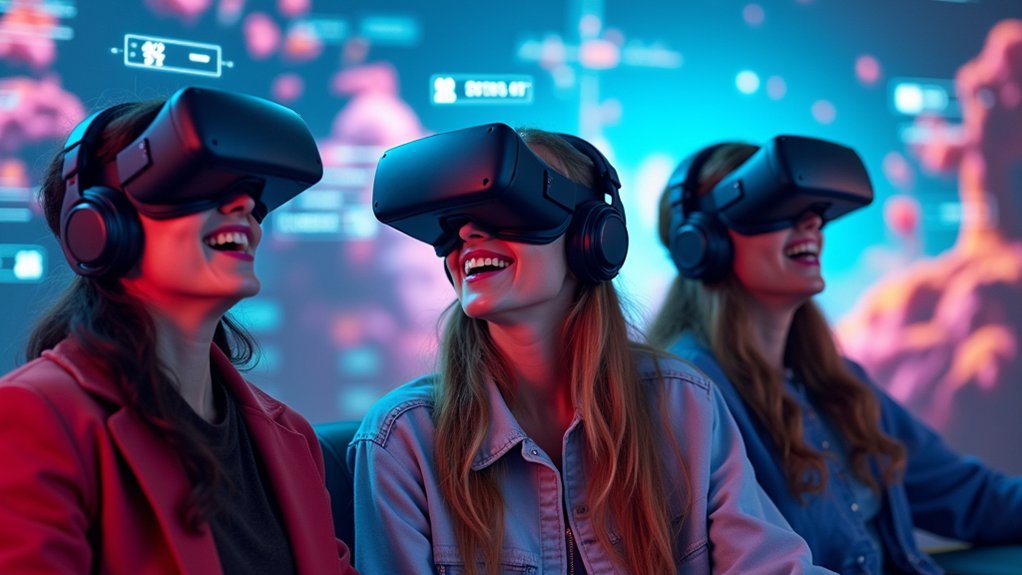
When you’re managing a VR multiplayer session with multiple participants, establishing clear communication protocols and defined roles becomes essential for preventing chaos and maximizing team effectiveness.
Start by assigning specific roles like leader, strategist, and communicator to streamline decision-making and enhance team coordination. Create structured communication protocols using dedicated channels—reserve tactical discussions for strategy-focused channels while keeping casual conversations separate to minimize distractions.
Clear role assignments and structured communication channels are fundamental to preventing confusion and maintaining focus during intense VR multiplayer sessions.
Maximize your voice chat capabilities by switching between Party Chat for team strategy and App Chat for in-game communication. This prevents overlap and guarantees clarity during critical moments.
Require team members to provide regular status updates, maintaining situational awareness across your multiplayer session. Schedule periodic check-ins to address issues and adapt strategies as needed.
Leverage Real-Time Synchronization and Performance Monitoring Tools
Since network latency and performance inconsistencies can instantly destroy the immersive experience you’ve worked hard to create, implementing robust real-time synchronization and performance monitoring tools becomes your next critical step.
You’ll need to maintain consistent game states across all clients through real-time synchronization, ensuring seamless player interactions regardless of individual network conditions.
Deploy performance monitoring tools to track frame rates, latency, and packet loss, enabling rapid issue identification and resolution.
Implement client-side prediction techniques in your multiplayer games so players see their actions immediately while servers validate the actual game state. This minimizes perceived lag effects.
Additionally, establish server reconciliation protocols to correct discrepancies between predicted actions and authoritative states, guaranteeing all players experience consistent, fair gameplay environments throughout their VR sessions.
Optimize Hardware Configuration and Network Infrastructure Management
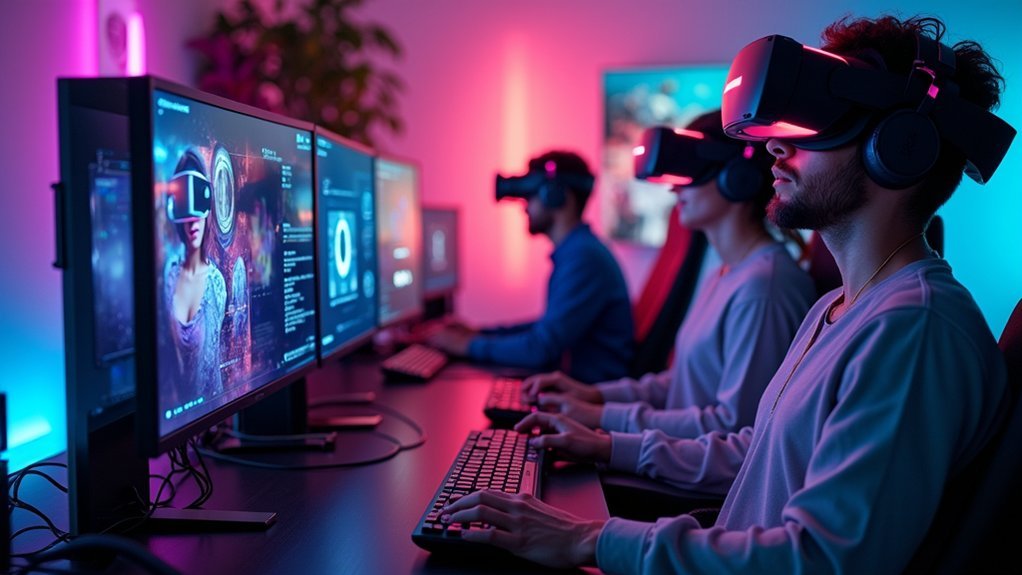
Real-time monitoring tools provide valuable insights, but they can’t compensate for inadequate hardware foundations or poorly configured network infrastructure that bottlenecks your multiplayer VR experience.
You’ll need to guarantee your Meta Quest 3 and similar headsets are fully charged and updated to the latest software version. Establish a reliable internet connection by optimizing network settings with Quality of Service configurations that prioritize VR traffic.
Upgrade your hardware components regularly, including routers and switches, to handle multiple users simultaneously. Use wired connections whenever possible for lower latency than wireless alternatives.
Invest in quality networking hardware and prioritize wired connections to support multiple VR users without performance degradation.
When players use the Invite to App feature for multiplayer game sessions, your optimized infrastructure will deliver seamless communication and minimize lag that disrupts immersive experiences.
Frequently Asked Questions
Can Two People Play Meta Quest 3 at the Same Time?
Yes, you can play Meta Quest 3 with another person simultaneously. You’ll both need charged headsets, strong internet connections, and can use multiplayer features like Invite to App functionality for shared gaming sessions.
How to Increase Performance on VR Games?
You’ll boost VR performance by reducing graphics settings, closing background apps, ensuring adequate ventilation, updating drivers, clearing storage space, and lowering resolution. You can also enable performance mode in settings.
Is the Walking Dead Saints and Sinners Multiplayer?
No, you can’t play The Walking Dead: Saints & Sinners in multiplayer mode. You’ll experience only single-player gameplay, as Skydance Interactive hasn’t developed multiplayer features for this VR survival horror game.
What Is the Number One VR Game Right Now?
You’ll find Beat Saber currently holds the top spot as the number one VR game, having sold over 4 million copies with its addictive rhythm-based gameplay that’s captivated players worldwide.
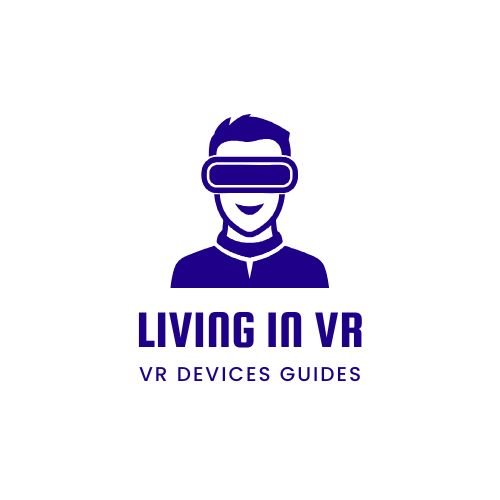
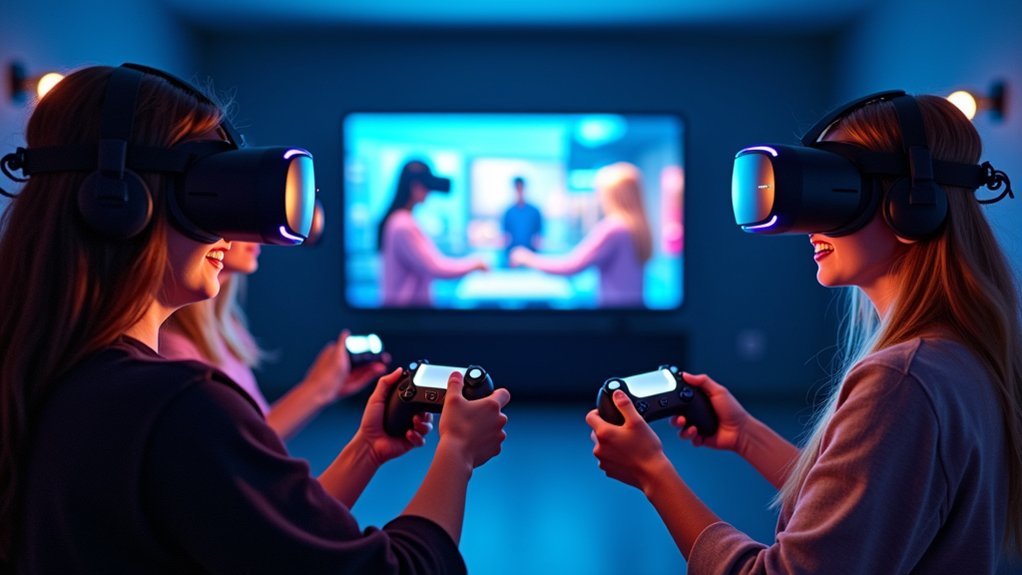
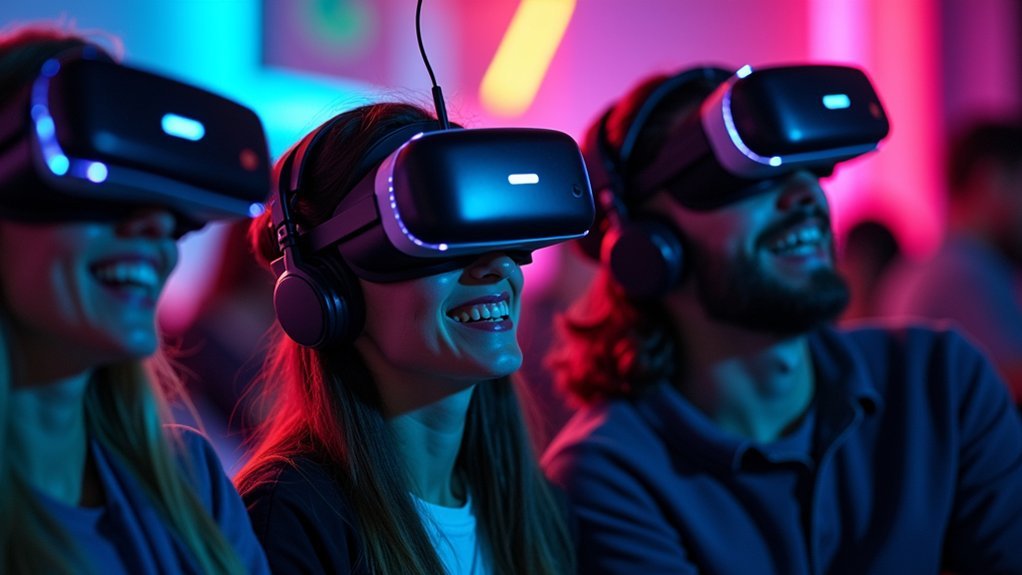


Leave a Reply